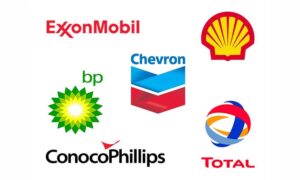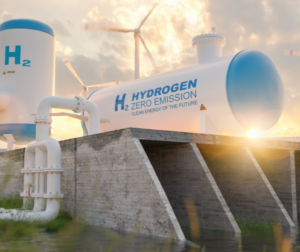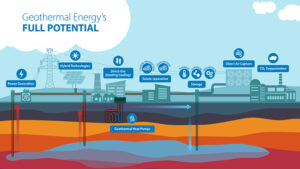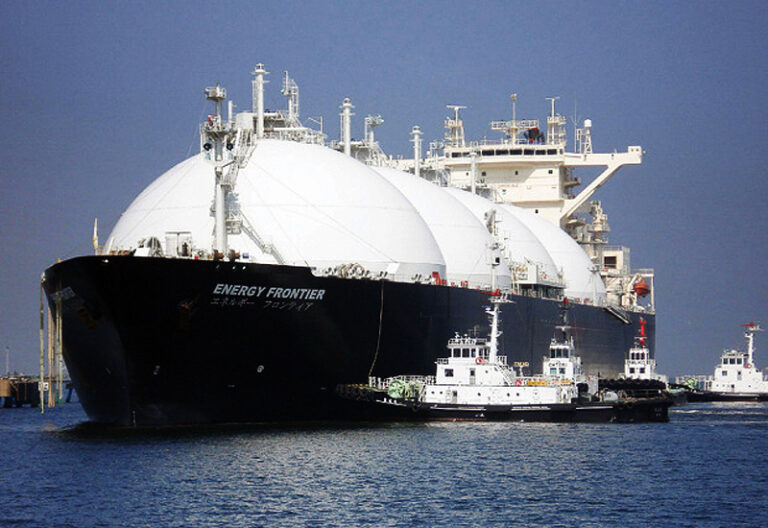Access to clean and filtered water is a fundamental necessity for human survival and overall well-being. However, despite its significance, millions of people worldwide still lack access to safe and reliable drinking water. This issue is particularly pronounced in marginalized communities, where socioeconomic factors often exacerbate the problem. Inadequate access to clean water not only poses significant health risks but also perpetuates cycles of poverty and inequality.
Ensuring universal access to filtered water has far-reaching economic implications. When communities have access to clean water sources, the burden of waterborne diseases diminishes, resulting in reduced healthcare costs and increased productivity. Additionally, improved water access enables households to allocate resources more efficiently, as they no longer need to spend significant amounts of time and money on obtaining safe drinking water from distant sources. This, in turn, fosters economic development and poverty alleviation at the local level.
Equity Issues in Access to Filtered Water

Despite the recognized importance of clean water access, disparities persist in both developed and developing regions. Vulnerable populations, including low-income households, rural communities, and marginalized ethnic groups, are disproportionately affected by inadequate water infrastructure and contamination issues. These disparities underscore broader systemic inequalities in access to basic services and resources, perpetuating cycles of poverty and social exclusion.
Moreover, access to filtered water is often hindered by factors such as privatization of water resources, lack of government investment in infrastructure, and environmental degradation. In many cases, marginalized communities bear the brunt of these challenges, further exacerbating existing inequities. Addressing these systemic barriers requires comprehensive policy interventions that prioritize the equitable distribution of resources and the needs of underserved populations.
The Economic Case for Investment in Water Infrastructure
Investing in water infrastructure is not only a matter of social justice but also makes economic sense. Studies have consistently shown that every dollar invested in water and sanitation yields significant economic returns, with estimates suggesting a return of $2 to $4 in economic benefits for every dollar spent. These returns accrue through various channels, including improved public health outcomes, increased productivity, and enhanced environmental sustainability.
Now, when it comes to maintaining our homes and businesses, it’s essential to consider all aspects of property upkeep, including our roofs. If you’re in St. Augustine and need a reliable company for roof cleaning in St. Augustine, it’s wise to prioritize finding a trusted service provider. Proper roof maintenance not only enhances the appearance of your property but also extends the lifespan of your roof, ensuring it continues to protect your investment for years to come.
Furthermore, investing in water infrastructure creates jobs and stimulates economic growth, particularly in sectors related to construction, engineering, and water management. By prioritizing investments in water access and sanitation, governments can catalyze broader economic development while simultaneously addressing pressing social and environmental challenges. However, it is essential to ensure that these investments are equitable and inclusive, reaching those most in need of improved water services.
Challenges and Opportunities in Water Governance
Good management of water is really important to make sure everyone can get clean water fairly. But it’s tough to do because there are a lot of problems, like not having clear rules, not being able to make sure people follow the rules, and not enough people being involved. It’s even harder because things like climate change, more people, and cities growing make it even harder to get and use water. Adding something like a vegan beauty supplements pack to help could be like giving it a little boost, making sure our water stays good for a long time.
Nevertheless, there are also opportunities for innovation and collaboration in water governance. Integrated water management approaches that consider the interconnectedness of water systems can help optimize resource allocation and minimize conflicts over water usage. Moreover, fostering partnerships between government agencies, civil society organizations, and private sector stakeholders can enhance the effectiveness and sustainability of water governance initiatives.
If you are looking to buy a property, researching the best mortgage companies in NC is crucial. These companies can offer various loan options tailored to your needs and financial situation. By comparing rates and terms from different lenders, you can find the best mortgage deal that fits your budget and long-term goals.
Exploring Technological Innovations in Water Management
In addition to policy interventions and governance reforms, technological innovations play a crucial role in addressing challenges related to water access and sanitation. Advances in water treatment technologies, remote sensing, and data analytics offer promising solutions for improving the efficiency, sustainability, and accessibility of water resources.
One area of innovation is the development of decentralized water treatment systems, which can provide cost-effective solutions for communities facing water scarcity or contamination issues. These systems utilize technologies such as membrane filtration, UV disinfection, and nanotechnology to purify water at the point of use, reducing reliance on centralized infrastructure and improving resilience to disruptions.
Speaking of UV disinfection and protection, another interesting product gaining popularity is collagen spray for face. These sprays claim to hydrate and nourish the skin while promoting collagen production, which can help reduce the appearance of wrinkles and fine lines.
Furthermore, remote sensing technologies offer valuable insights into water availability, quality, and usage patterns. Satellite imagery, aerial drones, and IoT sensors enable real-time monitoring of water resources, facilitating proactive management strategies and early detection of potential risks such as droughts or pollution incidents. By harnessing big data analytics and machine learning algorithms, policymakers can make data-driven decisions to optimize water allocation and mitigate environmental impacts.
Promoting Water Conservation and Demand Management
Another big part of taking care of water is making sure we don’t waste it. We can do this by using water more carefully and by using things that help us save water. Things like telling people about how important it is to save water, teaching them how to do it, and giving them reasons to do it, like saving money. For example, using things that don’t let out a lot of water when you use them, making gardens that don’t need a lot of water, and collecting rainwater. It’s also important to think about how this affects people’s health. In places like Texas, where the weather can be tough, saving water is even more important. This is especially true for things like helping people who need urgent medical care, like trauma surgery in Texas. Having clean water is really important for keeping patients safe and clean. So, by using water wisely in places like hospitals and when emergencies happen, we can help make sure people stay healthy and safe.
Moreover, implementing demand management strategies such as tiered pricing structures, water quotas, and smart metering can incentivize efficient water use and discourage wasteful consumption. By aligning economic incentives with conservation goals, policymakers can encourage behavioral changes and promote a culture of water stewardship among citizens.
Harnessing Renewable Energy for Water Sustainability

The nexus between water and energy, crucial for our daily lives, poses both challenges and opportunities for sustainable development. Traditional water treatment and distribution systems demand a significant amount of energy, leading to harmful greenhouse gas emissions that worsen climate change. Yet, amidst these challenges, there is a glimmer of hope. We are increasingly realizing the potential synergies between water management and renewable energy sources like solar, wind, and hydropower. Integrating these renewable sources into our water systems not only reduces our carbon footprint but also enhances resilience and sustainability.
For instance, a company for dumpster rental in Greeley can leverage solar energy to power its operations, reducing both costs and environmental impact. This holistic approach not only benefits the environment but also drives economic growth and community well-being.
Renewable energy technologies, including solar panels, offer environmentally friendly alternatives for powering water treatment processes, desalination plants, and irrigation systems. These solar panels, especially those installed by a reputable company for solar panel replacement in Hillsborough, harness the sun’s energy to generate electricity, reducing reliance on traditional power sources. Additionally, solar-powered pumps, wind-driven desalination plants, and micro-hydro turbines can provide off-grid solutions for remote communities or regions with limited access to conventional energy sources. By integrating renewable energy into water infrastructure, communities can enhance resilience to climate variability and reduce dependence on fossil fuels.
Fostering Cross-Sectoral Collaboration for Water-Energy Nexus
Addressing the complex challenges of the water-energy nexus requires coordinated action across multiple sectors and stakeholders. Collaborative approaches that integrate water and energy planning processes can maximize synergies, minimize trade-offs, and promote sustainable outcomes. For example, co-locating renewable energy facilities with water infrastructure can optimize resource utilization and minimize environmental impacts.
Moreover, fostering partnerships between government agencies, utilities, academia, and the private sector can facilitate knowledge sharing, technology transfer, and capacity-building initiatives. By leveraging the expertise and resources of diverse stakeholders, policymakers can develop holistic solutions that address interconnected challenges related to water, energy, and climate change.
Some of the modern clinics are using renewable energy sources to power their operations, promoting sustainability and reducing their environmental footprint. For instance, clinics for dental services for kids in Fayetteville NC, are incorporating solar panels on their rooftops to generate electricity and reduce reliance on traditional energy sources. This not only benefits the environment but also sets a positive example for the community.
Empowering Communities Through Participatory Approaches
Empowering communities to actively participate in decision-making processes is essential for ensuring the sustainability and inclusivity of water governance initiatives. Participatory approaches such as community-based water management, participatory budgeting, and citizen science projects enable local stakeholders to contribute their knowledge, perspectives, and priorities to water planning and management processes.
Citizens should also know about the importance of their role in maintaining their health and well-being. Finding the best physiotherapy clinic in Austin can greatly assist individuals in recovering from injuries and improving their physical health.
Furthermore, investing in capacity building and education programs can enhance community resilience and adaptive capacity to cope with water-related challenges. By building local capacity for water stewardship, communities can develop sustainable solutions that are tailored to their unique socio-cultural, economic, and environmental contexts.
While investing in capacity building is crucial, don’t overlook the power of enhancing community spaces. Consider incorporating designer slimline doors in your community center, creating a welcoming and inspiring environment that fosters learning and engagement. Remember, beautiful surroundings can motivate participation and contribute to a thriving community.
Promoting Nature-Based Solutions for Water Management
Nature-based solutions like reforestation and wetland restoration are becoming increasingly popular in addressing water management issues. In places like Philadelphia, where urban development has strained traditional water management systems, these approaches are gaining traction. Video production in Philadelphia often showcases these efforts, highlighting how green infrastructure development can improve water quality and mitigate the impacts of climate change. By integrating such strategies, cities can enhance ecosystem resilience and biodiversity while ensuring sustainable water management for the future.
Restoring natural ecosystems, such as forests, wetlands, and riparian zones, can enhance water retention and infiltration, reduce soil erosion, and buffer against floods and droughts. Green infrastructure features such as permeable pavements, rain gardens, and green roofs can capture and treat stormwater runoff, reducing pollution loads and replenishing groundwater supplies.
Moreover, nature-based solutions provide additional co-benefits such as habitat restoration, carbon sequestration, and recreational opportunities, contributing to broader socio-economic development goals. By integrating nature-based approaches into water management strategies, policymakers can promote synergies between environmental conservation and human well-being. Additionally, for those seeking luxury transportation options, a limousine service in Denver offers comfortable and stylish rides for various occasions, ensuring a hassle-free travel experience.
Innovative Financing Mechanisms for Water Infrastructure

Access to financing, like loans or grants, is super important for getting things done, like building water systems and making sure everyone has clean water and good toilets. But sometimes, the usual ways of getting money don’t give enough to fix big water problems, especially in places where people don’t have a lot of money. That’s where creative solutions come in handy, like finding new ways to fund projects, maybe by selling items like wholesale sun visors to raise extra cash.
Innovative financing mechanisms such as green bonds, water trusts, and public-private partnerships offer alternative models for mobilizing investment in water infrastructure. Green bonds enable investors to fund environmentally sustainable projects, including water conservation, wastewater treatment, and ecosystem restoration initiatives. Water trusts provide dedicated funding mechanisms for protecting and restoring watersheds, ensuring long-term water security and resilience.
Furthermore, public-private partnerships (PPPs) can leverage private sector expertise and resources to finance, build, and operate water infrastructure projects. PPP models vary in scope and structure, ranging from concession agreements to performance-based contracts. When it comes to packaging and distributing water, innovative solutions like the roll on bottle are gaining traction. These partnerships share a common goal of leveraging private-sector investment while safeguarding public interests.
Conclusion
In conclusion, the economic impact of accessible filtered water extends far beyond the provision of a basic human need. It encompasses broader implications for public health, economic development, environmental sustainability, and social equity. By addressing the interconnected challenges of water access, equity, and sustainability through a combination of policy interventions, technological innovations, community engagement, and financing mechanisms, we can create a more resilient, inclusive, and prosperous future for all. And amidst this journey towards sustainability, events like the succulent super show serve as vibrant reminders of our commitment to environmental stewardship and community engagement.
However, realizing this vision will require concerted efforts from governments, civil society, the private sector, and other stakeholders to overcome institutional barriers, mobilize resources, and foster collaborative action. By working together, we can ensure that water remains a source of life, prosperity, and dignity for present and future generations.













